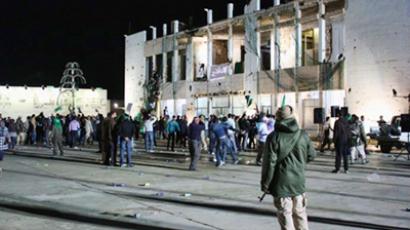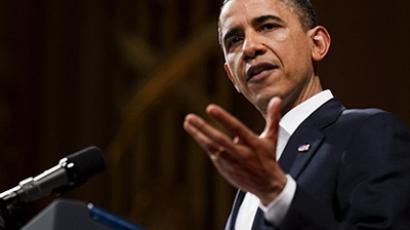War Stories: Promoting the war in Libya

The Pentagon, NATO, and others fight an information war to go alongside the real ones in the battlefield. This was is to sell the reality of a conflict where people are dying and billions are being spent to a public back home.
“War is hell and that’s why you only go to war when it’s in the absolute interest to your national security,” said Matthew Hoh, a former US State Department official.That harsh reality of war is one reason why coalition forces do battle with an information war.They fight it alongside the real one playing out on the ground in Afghanistan, for example, so the war is not widely known by milestones such as surpassing the Soviet campaign there, becoming the longest war in American history, or costing an exceptional amount of money.But instead, is a story of hope and reconstruction. That’s the NATO version told, for example, in a promotional film given to international journalists at the annual NATO summit.Public relations efforts to sell the war are nothing new. And commander of the NATO forces – the United States – spends billions to sell its version of the war to the world through PR at home and abroad, state-sponsored media, and psychological operations.For example, a leaked classified CIA document revealed a plan for allies.“Astrategic communication program across NATO troop contributors that taps into the key concerns of specific Western European audiences that could provide a buffer if apathy becomes opposition.”To fight declining public support for the war from France and Germany the CIA tapped Afghan women as the perfect messenger to make an emotional appeal about the Taliban and their aspirations for the future, as a woman does in the NATO video.Some media has picked up on this message, too. A TIME magazine cover equated pulling out US troops from Afghanistan with brutality against women when it pictured an Afghan woman with her nose cut off along with the headline “What happens if we leave.”“The thing to remember about this poor girl – this happened while US troops were there,” recalled Hoh.And some like feminist writer Jill Filipovic argue these PR tactics are an assault on women, too.“I think it absolutely exploits the women’s issue and exploits women,” said Filipovic, editor of the blog Feministe.“They certainly weren’t interested in women’s rights in that region until it became strategically important to them in the war on terror,” she said.And it is not clear efforts like this even work."It’s impossible to tell and I would venture to say it's been ineffective,” said Jake Diliberto, a veteran and critic of the Afghan war.Maybe US defense secretary Robert Gates would agree. As his recent NATO speech can attest, he’s now resorting to scolding allies for getting ready to abandon the war.Meanwhile Hilary Clinton said the US is losing when it comes to broadcasting the message on state-funded TV stations, “and unfortunately we are paying a big price for it,” she told members of Congress.Even though the US has spent more than $1 billion dollars alone to broadcast its message to the Arab world where it’s at war through the state-funded news network Al Hurra, the network has locked in just a half percent of viewership.All showing perhaps you can’t sell the war unless you have a buyer.














